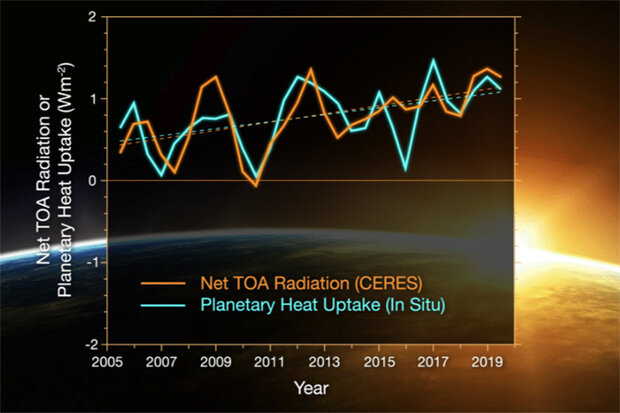Joint NASA, NOAA study finds Earth's energy imbalance has doubled
This graph compares estimates of net top-of-the-atmosphere annual energy flux from CERES (solid orange line) and an in situ observational estimate of uptake of energy by Earth climate system (solid turquoise line). Credit: NASA/Tim Marvel
Earth’s climate is determined by a delicate balance between how much of the Sun’s radiative energy is absorbed in the atmosphere and at the surface and how much thermal infrared radiation Earth emits to space. A positive energy imbalance means the Earth system is gaining energy, causing the planet to heat up. Now, NOAA and NASA researchers have found that Earth’s energy imbalance approximately doubled during the 14-year period from 2005 to 2019.
The study was published June 15 in the journal Geophysical Research Letters.
Scientists at NASA and NOAA compared data from two independent measurements. NASA’s Clouds and the Earth's Radiant Energy System (CERES) suite of satellite sensors measure how much energy enters and leaves Earth’s system. In addition, data from a global array of ocean floats, called Argo, enables an accurate estimate of the rate at which the world’s oceans are heating up. Since approximately 90 percent of the excess energy from an energy imbalance ends up in the ocean, the overall trends of incoming and outgoing radiation should broadly agree with changes in ocean heat content.
Read more at the link below.
